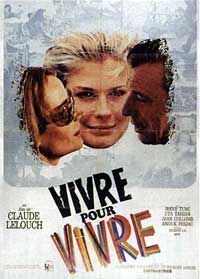
I can assure you that you know every single piece of music featured at KickAssClassical.com, but you’d probably strain a muscle trying to figure out when and where you’ve heard them. Hopefully it won’t come to that, because Mike Nelson no, not of mst3k fame has compiled 100 of the most popular pieces in the “serious music,” aka classical music repertoire, pieces made famous by their use (or perhaps over-use) in film, television, cartoons and commercials.
Divided by composer (52 of them), each entry gives a brief bio and pronunciation guide for all the non-anglo names and lists where each piece has been used in modern culture.
The site also includes mp3 snippets of each composition, featuring the most well-known measures of music. I promise you’ll probably be able to hum along to every one. The real trick will be if you know what comes next. I found that on a handful of them, I was at a loss to continue the song after the sample had stopped, even though I completely recognized tune.
Still, you’ll be surprised by where a lot of familiar songs come from. Myself, I nearly had a fit when I heard the sample of Grieg’s In the Hall of the Mountain King:
[audio:Mountainking01.mp3]Because about five years ago I decided to use one of my Mac’s speech voices to record my cell phone voicemail message. After playing with all the various options, I settled on one of the “singing” voices, a voice that sounded a lot like the speech from Stephen Hawking’s talking computer, but to a melody.
That was with OS 9 and I’ve since lost the sound file. Mac OS X maintains that melody but has changed the tone with the speech voice “Cellos,” which I used to recreate part of the message i don’t remember all the lyrics.
[audio:HawkingSong.mp3]Trust me, it was funny. But since then, I’ve always been curious about what piece of music it was based on, because I recognized it, but couldn’t place it. As you can hear, it’s clearly In the Hall of the Mountain King. Now that I’m armed with that information, I think I’ll have to track down a good recording of it.
“Cellos” isn’t the only Mac voice to take its inspiration from a classical tune however. “Good News” is modeled on Elgar’s Pomp and Circumstance, a piece known to graduates world-wide, while “Bad News” is Chopin’s “Funeral March” aka Piano Sonata No. 2 In B Flat Minor.
Speaking of Chopin’s “Funeral March,” KickAssClassical makes the observation that John Williams’ Imperial March “sounds like an amped-up version” of it.” He might be onto something there, especially it you take that march, speed up the tempo, and overlay it with The Ride Of The Valkyries.. Then you might have a case.
Anyway, go check out KickAssClassical.com.




